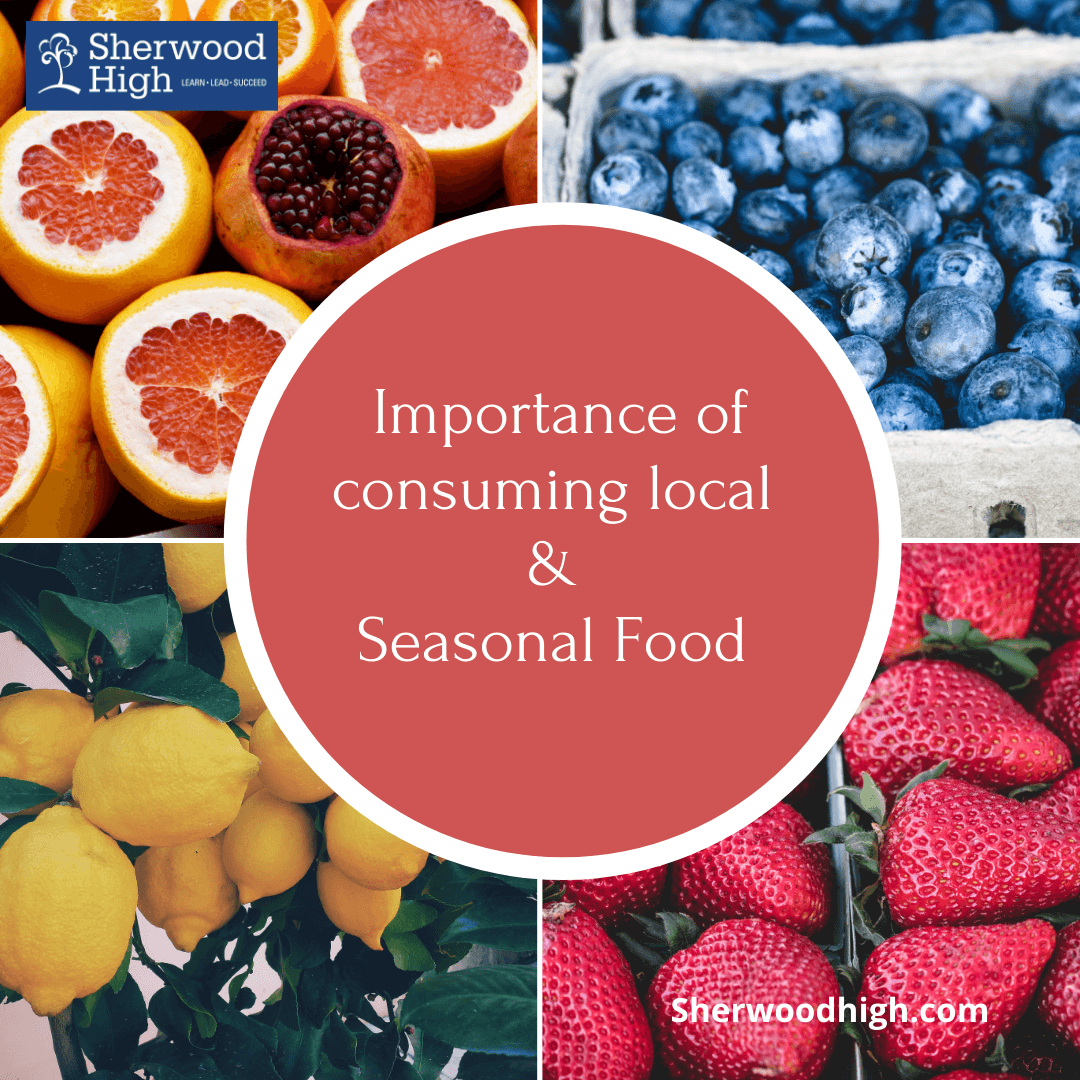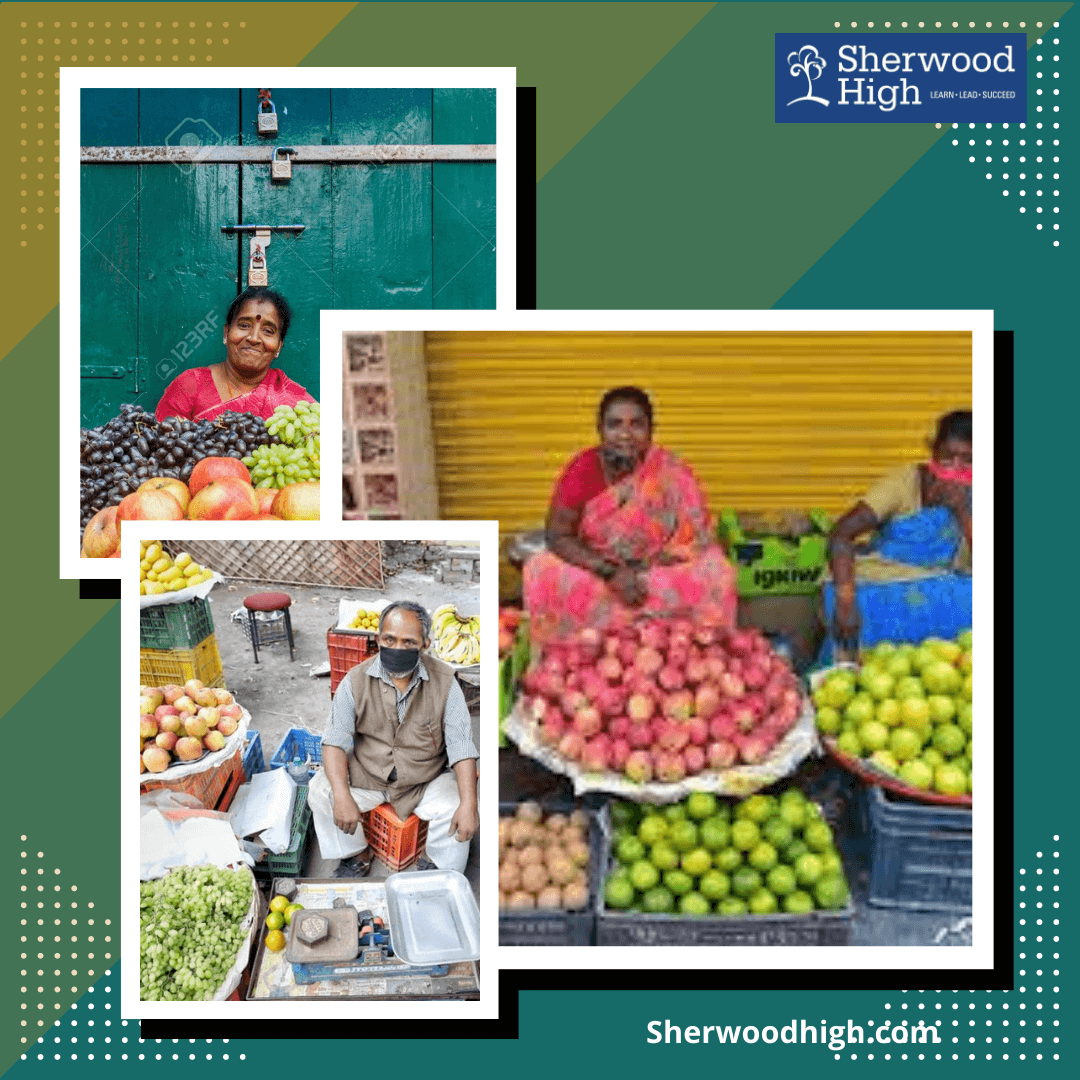
IMPORTANCE OF CONSUMING LOCAL AND SEASONAL FOOD.
IMPORTANCE OF CONSUMING LOCAL AND SEASONAL FOOD.
Seasonal and local produce refers to the times of the year we reap certain food products and the flavor of the food is at its peak. For example, It’s the mango season! Are you a mango lover? If so, don’t you miss mangoes once the season is over? Mangoes are available from early March till august, after which it is still available but you don’t enjoy the same taste and the prices of the mangoes are increased. This applies to all foods.
Each season of India produces enough foods for us to consume every day. Anything which is grown locally during any season is the best food to consume. It is fresher and healthier to consume than any other food which comes from outside of India.
In India, we have five commonly known seasons: spring, summer, autumn, monsoon, and winter. Let’s look at some of the seasonally grown local foods and their benefits.
SPRING:
Spring fruits and vegetables are packed with vitamins and minerals which are essential for a healthy diet. Spring brings cool breeze during the night and sunshine in the day. It is common again that you can easily catch a cold or flu if you don’t take food that acts as an anti-allergenic.
Fruits: Cherries, jackfruit, avocado, pineapple, cantaloupe, and apricots.
Veggies: beetroot, garlic, spring onion, carrot, cabbage, and beans.
AUTUMN:
Autumn or fall is neither cool nor hot. Leaves change their color, and the weather becomes cooler. This is not a great season for cultivation because we have no rain and it is a sort of dry season. However, autumn fruits and veggies are still very rich in vitamins and minerals.
Fruits: Sweet lime, custard apple, black Jamun, guava, bananas, and pears.
Veggies: Mushrooms, lettuce, potatoes, sweet corn, and sweet potatoes.
MONSOON:
Monsoon brings cleansing and thirst-quenching rains along with the not so welcome, slushy roads.
Gulping down the hot tea, coffee or cocoa would help you keep respiratory infections at bay. Our love for bajjis and pakodas during the monsoons is well known, but having a hot bowl of healthy soup with a lot of herbs now and then along with those yummy fritters would help you a great deal.
The crops grown during rainy seasons are called the Kharif crops. Some examples of these can be rice, paddy, Jowar, bajra, maize, cotton plants, et cetera.
Some vegetables being radish, beans, green chilies, brinjal, okra.
Some fruits can be peaches, plums, pomegranates, pears, cherries.
SUMMER:

Summer fruits and vegetables help you stay full and are essential for good digestion. They contain fiber, micronutrients, and water. In summer we tend to go outdoors more often and sweat quite a lot too, so it’s essential we drink a lot of water, and eat these fruits full of water content like watermelons to stay well hydrated.
The summer vegetable and fruits naturally come with lots of water content in them, below are some examples for your reference:
Fruits: Watermelons, strawberries, mangoes, plums, lychees, and rambutans.
Veggies: Cluster beans, zucchini, cucumber, bottle gourd, brinjal, and tomatoes.
WINTER:
The intensity of winter depends on the region you stay or visit between December to February.
While South India has somewhat pleasant weather with manageably cool temperatures, the north can be extremely cold. And with winter comes a new load of viruses and infections that we have to keep ourselves safe from, so all the more reasons for eating fresh and local foods.
Winter fruits and vegetables are rich in nutrients, minerals, and flavor.
Fruits: Apples, Oranges, lemon, kiwi, papaya, dates, and grapes.
Veggies: Ash gourd, bitter gourd, spinach, turnip, cauliflower, pumpkins.
Amazing benefits of eating local produce:
Local produce helps us eat fresh fruits and veggies. Freshness in food is important to retain nutrients and minerals. It protects our health and reduces our carbon footprint.
Food that we buy from outside of India will take more time to reach us and is packed with chemicals to maintain a fresh look, but it loses its nutrients due to the time and chemicals.
Food which comes from afar is always costly, but when we buy the vegetables from the local people, it will support the local farmers and local economy along with going easy on our own pockets.
1. Local produce is fresh.

The very word fresh makes us feel welcome about its goodness. When we import goods from other countries, it takes an enormous amount of energy to reach us on time. They should keep it under perfect temperature. If electricity fails, it’s a complete waste of time and energy. But getting the local food is as easy as plucking fruit from the garden. It looks fresh, tastes fresh, and is overwhelming with flavor.
2. Local produce is nutritious.
Eating a fresh bowl of fruits and vegetables is essential to maintain good health. We work all day to have a healthy and fit life and we can do that by simply munching the great punch of healthy fruits and vegetables that complement our health so well. The best part is that they’re so easily available, we can buy the best fruits and vegetables from the local vendors.
3. Local produce is cheaper and safer.
Local produce is cheaper and safer to consume. When we import food products from outside of India, shipping and transporting needs a lot of preservation. This preservation can be extremely harmful if not washed properly.
It takes at least a week’s time to reach us and sometimes it runs the risk of getting spoiled when they are not packed in a hygienic and proper way. But local produce comes to the market the very same day or the following day and has no preservatives, making it much safer and cheaper to buy and easily the best choice.
4. Local produce is eco-friendly.
Transporting and shipping goods from outside India takes its toll on the environment too. The procedure warrants too much pollution quite easily. The cost of petrol and diesel is super expensive, leading to the superfluous tension to our mother earth. When we buy our fruits, vegetables, herbs, and spinach from local sellers, it yields more benefits to our nature as we can avoid the carbon footprints to create a powerful eco-friendly environment.
5. Local produce supports the local economy.

There is no point if our local farmers suffer while letting the foreign farmers flourish. We have to support our local farmers by buying more local fruits and veggies. By increasing our concentration mindfully about buying local produce, we are doing our share in helping the local economy in the long run, as it gives immense strength and encouragement to our local farmers who need them the most. Our first priority should always be local foods rather than imported ones.
For example: If one is craving luxury nuts and dried fruits, we can buy homegrown macadamia, pistachios, cashews from our Indian market instead of buying an imported hazelnut.
Conclusion:
We Conclude, by letting you all ponder over this question, Would you consume more local produce to enjoy the host of benefits which come along with them?
If your answer is yes, buy more and consume more fresh and local foods.
The freshness, the quality, the flavor, and the cost of local produce are all factors that cannot be matched. It costs less not only for you but for the planet too. Keep a track of local vendors and local agricultural communities to understand the local produce and seasonal foods better. As the issue of climate change is increasing drastically, the risk of agricultural uncertainty is also very high. It is important to know the amazing and multiple benefits of seasonal food and local produce and do everything we can to keep ourselves healthy, our local farmers’ benefit, along with helping the planet.






